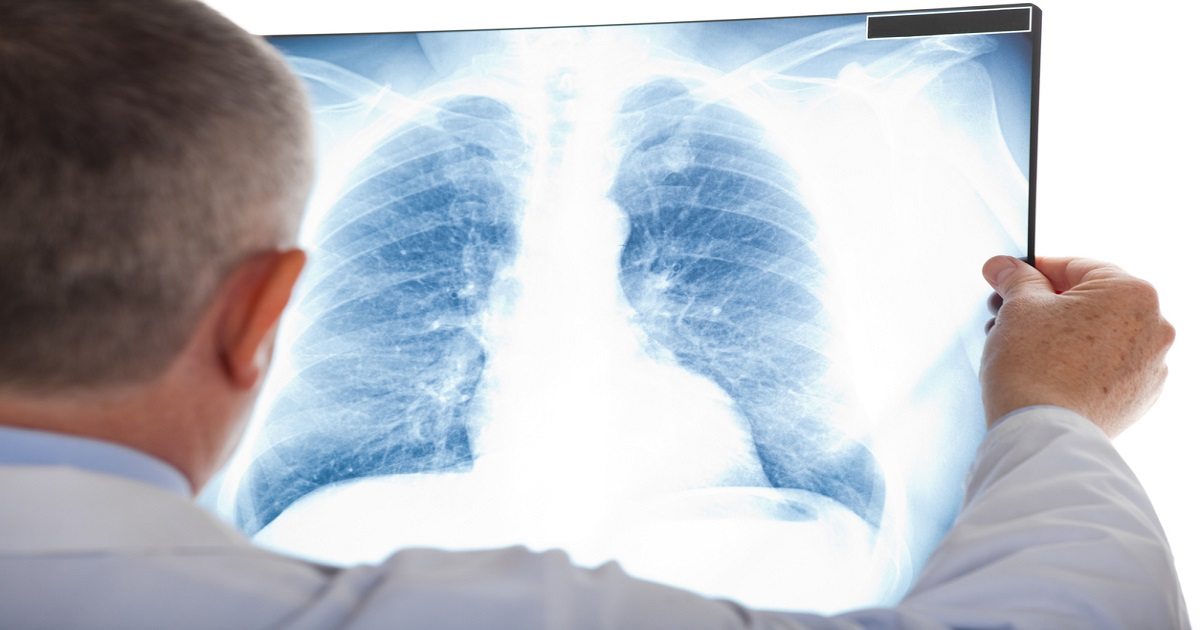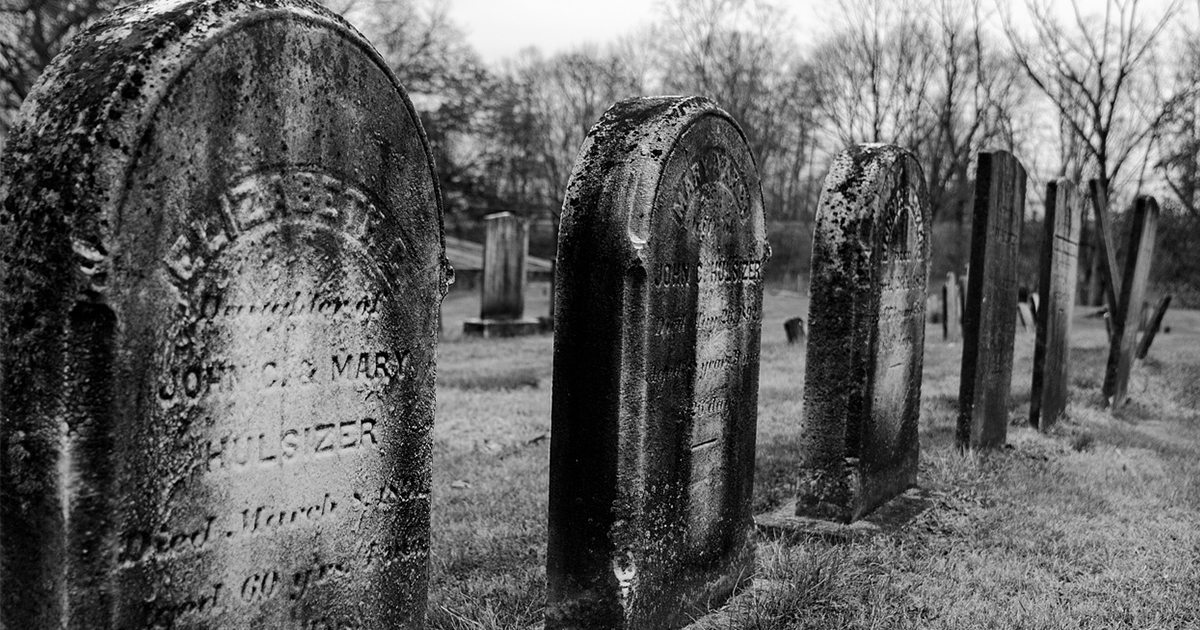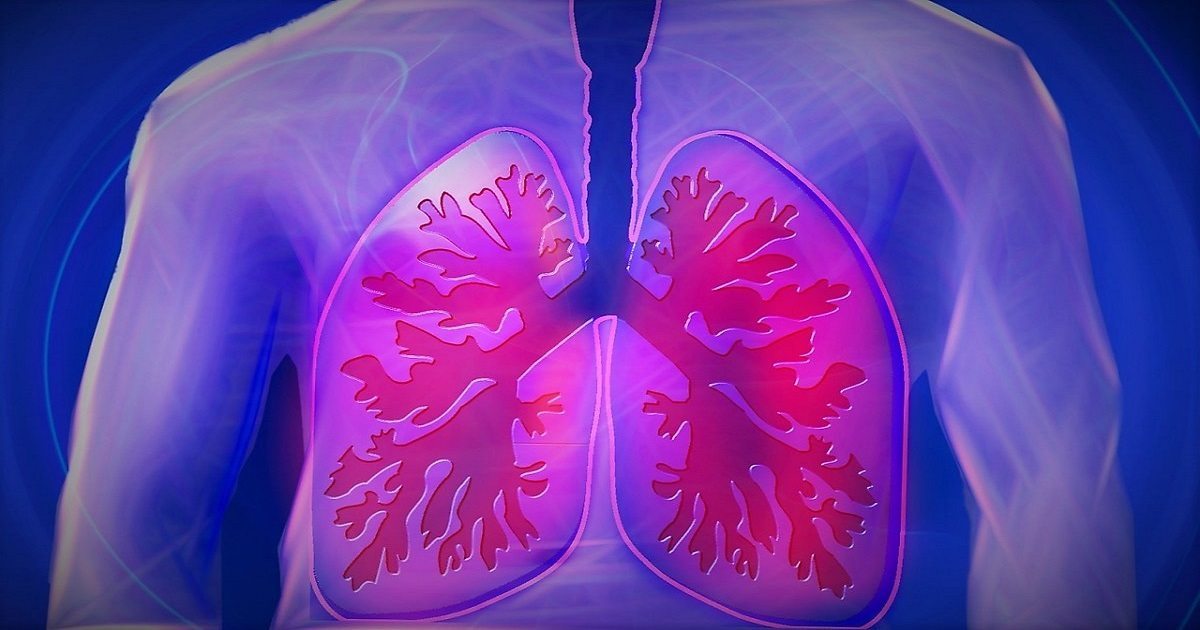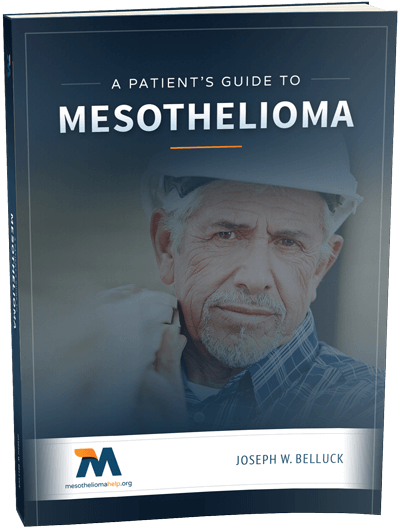Mesothelioma Help Cancer News

Jade Golden – Essay Contest
Essay by Jade Golden
All of my life, my mother had always been exceptionally healthy – almost unusually so. She was in great shape, she ate well, and she was busy, much too busy to even have the sniffles. However, one evening while we were having dinner, my mom casually mentioned that she had been feeling winded while climbing up and down the stairs. She attributed her shortness of breath to a nagging “chest cold” she had been suffering from for the past month. It was an odd thing for her to complain about anything, so I suggested she see a doctor.
At first, her health providers thought she had pneumonia. Her symptoms were vague and easily attributable to common and mostly benign respiratory conditions. She didn’t have a remarkable past medical history or occupational history that would cause suspicion or draw any red flags. In spite of this, further workup and a lung biopsy revealed the insidious cause of her breathing difficulty.
Stage IV mesothelioma. I vividly remember my brother coming into my room to tell me her diagnosis. My mom’s physician had just called about the biopsy results. At the time, I didn’t know what mesothelioma was. Confused and worried, I searched online for any information I could find. The one thing that stood out amongst the blur of panic was “poor prognosis” and disease mortality charts indicating my mom would have only a few months to live.
Despite a prognosis that would have crushed those with less of a will to survive, my mom charged forth with a tenacity and positivity that astounded me. For the next four years, she fought hard, going through round after round of life zapping chemotherapy as well as invasive surgeries. Although she did enjoy some happy years of remission, her cancer eventually returned and progressed rapidly. During this time, we spent endless hours in hospitals, consulting professionals, searching for solutions to a problem that we could not fix.
Words cannot accurately describe the helplessness I felt in watching my mom suffer. How could someone who had been so independent, vivacious, and vibrant all her life suddenly become this frail shell of the person she once was? She had lost the ability to complete even the simplest of tasks and was unable to walk unassisted. Her abdomen was like a giant watermelon, hard and swollen from ascites. Her legs were edematous and trunk like. Even her once soft, flawless olive skin was ashen, tented and fit loosely on her bones. I did what I could to make her feel her best – I dressed her, bathed her, put her makeup on, prepared her meals. However, her health continued to decline. On a warm afternoon in late June, my mom passed away.
My mom’s battle with mesothelioma truly gave me an appreciation for the sanctity of human life and encouraged me to seek ways where I could help other people in a medical setting. Because of her, I chose to go to graduate school to become a physician assistant, because I knew I could make a positive impact on the lives of others. I hope to use my education to help patients with cancer and give them the resources they need to head into battle with the positivity and determination to beat this devastating disease. Treating cancer is not just a physical battle. It is a mental and emotional one, too. I don’t want any one of my patients to feel alone or alienated by the challenges they face. I want to ensure that they have strong support system – family, friends, a support group, myself – ready to listen to their fears, share their concerns, and cheer them on.
To this day, we are unsure when or where my mom was exposed to asbestos – this is why raising awareness for mesothelioma and educating the public about the dangers of asbestos is crucial. Asbestos exposure is the primary carcinogen linked to the development of mesothelioma. Asbestos has been used in a wide array of products including insulation, car brakes, paints, adhesives, and ceiling tiles to name a few (“Asbestos”). When asbestos-containing products are damaged, asbestos fibers can be released into the air. If a person inhales these fibers, the fibers can get caught in the lungs causing damage to lung tissue, which potentiates the risk of developing cancers, like mesothelioma (“Asbestos”). Although the most commonly affected organ system is the lungs, asbestos can also become trapped in the abdomen or pericardium, which is the lining around the heart (“Mesothelioma Cancer”). Groups recognized as high risk for asbestos exposure include individuals who have worked in industries such as shipbuilding, textiles, construction, and asbestos mining (“Asbestos”); however, this does not exclude those who have not worked in such fields. Even people who do not work in such industries should be aware of asbestos containing materials at home, school, or work and be mindful to avoid those materials.
Physicians had difficulty diagnosing my mom with mesothelioma because she did not fit the typical demographic of most mesothelioma patients. It can take up to 10-40 years before symptoms of asbestos exposure occur (“Asbestos”), so identification of exposure is often difficult unless the patient has had significant occupational history in one of the previously mentioned industries. The most common presenting symptoms in mesothelioma are shortness of breath and chest wall pain, but patients can also present with fatigue, weight loss, fever, and sweats (“Mesothelioma”). It is important that people presenting with these symptoms seek medical care, especially if they have known asbestos exposure.
To someone who has lost a loved one to mesothelioma, I would say don’t ask the “what ifs”. I have often asked myself, “What if I knew then what I know now about mesothelioma? What if I had told her to see a doctor sooner? What if I could’ve changed what happened?” The “what ifs” do not change what has happened. It took me a long time to realize that. Now, I focus on the happy moments. I think about my mom dancing at my brother’s wedding. I think about her laugh and her smile. Mesothelioma took so much, but it has not taken away all the loving memories I have of my mom that keep her spirit alive.
References:
- “Asbestos Exposure and Cancer Risk.” National Cancer Institute. N.p., n.d. Web. 17 Feb. 2017.
- “Mesothelioma Cancer.” Mesothelioma.com Resources for Patients and Their Families. N.p., n.d. Web. 20 Mar. 2017.
- “Mesothelioma.” Practice Essentials, Background, Etiology. N.p., 08 Jan. 2017. Web. 23 Mar. 2017.
About
 Jade Golden
Jade Golden
I am currently studying at MCPHS University to become a physician assistant. My mom was diagnosed with mesothelioma when I was a senior in high school and passed away shortly after I graduated college. She inspired me to pursue a career in healthcare. I hope someday to share my knowledge and compassion with patients and their families who are dealing with difficult situations like the one my mom and family went through during her battle with cancer.

Heather Johnson – Mesothelioma Essay Contest
Essay by Heather Johnson
When I was a small child and would hear that someone had cancer, I couldn’t comprehend what that meant and in my case, it was always old people. So initially I began to equate it to the elderly and death. These people that contracted cancer were also sort of mythical to me while I was growing up. I was never a direct victim back then in my early years. Oh, how I yearn for the ignorance of youth at times.
My first dance with the big C was in my early twenties. It should be described more as a “scare.” I had for the first time in my life had a pap smear that gave me abnormal results. That then lead to a biopsy and then a procedure called a LEEP. I was educated on the wonderful HPV virus and told how lucky I was that I didn’t need additional treatments, so I moved on with my life just feeling a little less invincible.
Cancer decided it would leave me and people close to me alone for a while and then suddenly it decided to change my life and the lives around me drastically. To tell the story, I need to go back to before I was even born.
Imagine spending your childhood in the 50’s and 60’s on a big farm. Having a mother that made fresh breakfast every day with the eggs from the chickens on the farm. You drank milk from what the cows produced on the farm. Everything was green and fresh. You would play outside barefoot with the barnyard kittens and your farm dog would follow you all around when he wasn’t sleeping under a tree or chasing a tractor.
Your family owned several farms in the area and hundreds and hundreds of acres, so when it was nice and you got older you and your younger sister would go on bike rides to visit and play with other relatives that lived on the other farms. Sometimes even with all that excitement you would get bored and even though your Mother would get cross at you; you would ride to the outer borders of the town that was close by and play there.
That was extremely entertaining. There was a huge factory there with a huge parking lot that after the day shift workers went home would get very empty. Lots of fun for kids and their imaginations. Back then, cops wouldn’t kick children out for trespassing because the businesses weren’t worried about the next law suit that might occur yet. So, this left for hours of entertainment. Four square games, tennis matches and different hop scotch games would take place just to name some examples. Then tired and tuckered out, everyone would return home to get the sweat off their bodies, maybe evening chores, or dinnertime.
Everything seemed so simple and pure back then. No one was worried about the billows of white, gray, and black smoke that came out of the factory. They didn’t worry about how they disposed their waste and the fact that this factory bordered a creek and the Kreider’s Dairy Farms. It brought jobs and industry to a small town in Lancaster. It was Manheim’s Raymark Asbesto’s plant.
The factory opened in 1906 bringing more than 500 jobs to the small country town. It was mostly shut down by the 1980’s and totally closed by 1998. Asbestos has been linked to cancer and mesothelioma. Mesothelioma is sometimes even called the “asbestos cancer.” It affects the thin lining that encases our organs. Of course, only people that worked at the factory would be at risk for this type of cancer. Wrong!
My mother-in-law, Patricia Kreider Johnson was that child mentioned above. Living and growing up in that pure country life. She grew up with fresh food straight from the farm and had no lack of exercise. Who knew that just living a little over a mile from the asbestos plant would have such a horrendous effect on her life 50 years later.
In 2011, my husband and I were driving when we got a call from Brian’s (my husband’s) grandmother. The typical grandmother checking up on her grandson conversation. During this conversation, she asked him if he talked to his mother. He responded, “No, why.” She then told him that his mom, who was a hospice nurse, hasn’t been at work for three days. She had been ill and not sure what was making her sick. At this point, they suspected a bad case of the flu.
A week later, still no answers. Now we were all very worried and concerned. Bloodwork was coming back normal. How could this be? The woman was so fatigued she could barely lift her head. She was sleeping two-thirds of the day. This was not normal for anyone who knew her. To say she was active is an understatement. She could be a whirlwind.
Two more weeks later, she finally had her diagnosis. Stage 4 mesothelioma with approximately 6months to a year life sentence. We were in shock. Incurable. We were in denial. The family opted to try to extend her life with no avail. The treatments just made her weak. They made her even more immunocompromised so she couldn’t be around the grandchildren. She slept all the time and had so much pain. Pat passed away almost 9 months after her diagnosis.
At the same time my grandmother, who also had cancer but of a different kind also passed away. This was my first real time with any loss and not only did I have to grieve my Nana but also my mother-in-law. How was I supposed to be there for my husband and children as they lost their mother and grandmother? Those weeks and months are a blur.
It was about six months later, November 2013 I enrolled in my first class to take that spring semester with the goal of a nursing degree. My Nana always would say to me “you should have been a nurse” when I was taking care of her and I could honor my mother-in-law at the same time. I will never be able to fill Pat’s shoes. She was an incredible nurse.
I have one more year left. In the beginning, I was taking classes part-time and working full-time, but I started to get so eager about fulfilling my dream that I enrolled at PA College of Health Sciences for the fall of 2016 full-time. My daughter and I are freshman simultaneously at a different school. I also have three amazing boys and am trying to pay for the rest of school by only taking out the federal loans. This has been difficult, going from a two-income household to one income. My husband has been super supportive. I thank God for him every day.
Finally, this is what cancer did to me. It took away two amazing people in my life in a short period of time, but it let me say goodbye. It taught me that each day is a gift and to respect time and make the most out of it. It taught me that every chance you get to see or talk to someone you love, you express it and never say goodbye to them without “I love you” attached. It taught me to look at life differently and I can’t quite explain that but I just know I do; I look at it so much differently now.
About
 Heather Johnson
Heather Johnson
I’m a wife and mom of 4 wonderful children and currently working on my RN. My oldest is also in college. I love to live life to the fullest. My favorite saying that I learned from my Dad is “Living the Dream” when anyone asks how I am doing. When I talk with people about mesothelioma, it amazes me, in my area especially, how many people have not heard of it.

Is It Just A Cough Or Is It Mesothelioma?
Not everyone who has been exposed to asbestos will develop mesothelioma, but it is important to be aware of the symptoms and to know when to contact a doctor. A cough is one symptom that many pleural mesothelioma patients share, yet it can also simply be a cold or the flu. Knowing the difference can impact a patient’s long-term health.
According to a Sept. 18 article in Medical News Today, while coughing is a “protective action” that helps clear the lungs of germs or harmful objects, when the cough lingers, it may be time to take note. Specifically, the authors note, if a cough is associated with coughing up blood or rust-colored phlegm, shortness of breath, or chest pain you should call a doctor.
Mesothelioma is a terminal, asbestos-caused cancer that may not be diagnosed until decades after the patient was first exposed to the carcinogen. Many times the patient will not even realize he or she was exposed to the mineral, and chances are the deadly asbestos cancer is the last thing on a doctor’s mind when trying to understand why their patient cannot get rid of their cough, why their lungs are filling with fluid and why the antibiotics are not helping.
Expert Insight
“A cough that is associated with lung cancer can be either dry or wet. It can occur at any time, and even be so severe that it interferes with sleep at night.”
However, early detection of mesothelioma is critical and can positively influence a patient’s survival by increasing treatment options and improving their quality of life while battling the cancer. An accurate diagnosis that distinguishes between a temporary illness, such as pneumonia, and mesothelioma is critical for ensuring an appropriate treatment plan is established from the onset.
There may be other symptoms that go along with your cough, that should also sound an alarm, such as wheezing or hoarseness of the voice, problems swallowing, loss of appetite, and returning bronchitis or pneumonia.
Mesothelioma can be challenging to diagnose, and often before an accurate diagnosis there are multiple misdiagnoses. It is not uncommon for a diagnosis to take months and many trips to the doctor’s office and even the emergency room. Pleural mesothelioma symptoms can mimic other diseases such as the flu, pneumonia, and other cancers, making it very difficult to diagnose.
If you have been exposed to asbestos in the past and are suffering from a lingering cough, do not hesitate to contact a doctor. Nearly 3,000 Americans are diagnosed with a form of mesothelioma each year.

Four Years After Losing My Father to Mesothelioma It Still Hurts
“I love you so much, it hurts.” It’s something that I’ve heard throughout my life. But what does that really mean? How is it possible to love someone in such a way that it causes you pain? When I stop and think about it though, it makes perfect sense.
I loved Dad so much, that when he was diagnosed with mesothelioma, it broke me apart inside. I cared so deeply that watching him endure treatments caused me intense agony. I treasured him, causing inexplicable anxiety when it was time for his quarterly scans. I loved him so much, it hurt.
October 15 marks four years since I lost my father. The pain of loving and losing him follows me each and every day. It’s a feeling that never fades, but is sometimes overshadowed by the life continuing on around me. You can’t escape the hurt of such a profound loss… but do you really want to?
This must seem like a terrible question to pose. Do you want the pain of losing someone you love to go away? Of course, you don’t want to feel it forever in the same way you do the moment you hear the news. You don’t want to be crippled by it. At the same time, you don’t want to forget it. That pain means that someone touched your life, touched your heart. It shows that they truly meant something to you.
Each time I start to feel that pain, I stop to think of the reason behind it. I feel sadness and grief because I loved someone, and they loved me. I have an aching in my heart because, even though there is a piece missing, it was occupied by a person who believed in me and lifted me up. The tears I cry are shed for a purpose, I miss someone who shaped me. What a blessing to have had someone like that in my life.
I loved… no, I love my Dad so much, it hurts. Putting a past tense on that feeling seems wrong in some way. Just because he is no longer here with me, doesn’t lessen who he was as a person or the impact he had on me. He lived by example, a beautiful trait that I hope to pass on with my daughter. He carried himself with grace and humility, even while carrying a cross as heavy as his disease. He loved so much, it hurt… I am grateful to have been a recipient of such a love.

Mesothelioma Treatment May Come From Discovery of Treatment for “Undruggable” Form Of Aggressive Lung Cancer
MesotheliomaHelp has reported many times on the challenges in treating KRAS-positive lung cancer, one of the most aggressive subtypes of lung cancer. Now, in a new study, researchers report they may have found a way to tackle lung cancer when the KRAS gene is present. This finding could also prove encouraging in the future for mesothelioma treatment.
According to an Oct. 2 press release in MIT News, a team of MIT researchers took a closer look at the Kirsten rat sarcoma virus (KRAS) and homed in on the KEAP1 mutation of KRAS, which, according to the researchers, is the third most frequently mutated gene in lung cancer. They found that in cancer where the KEAP1 gene is “nonfunctioning” cancer cells hunger for glutamine. They determined that if they could cut off the supply of glutamine to the tumors, they could treat both KRAS and KEAP1 mutations.
KRAS-mutated cancers are referred to as “undruggable” due to the inability to successfully target the protein with medicine. However, the MIT researchers began to experiment with suppressing KEAP1 which resulted in over-expression of yet another protein, NRF2, becoming hyperactive. This led them to then assess NRF2, and they determined that patients with “‘up-regulated’ NRF2 tumors had significantly worse survival rates” than other lung cancer patients.
Expert Insight
Tyler Jacks, MIT
“The complexity of human cancer can be quite daunting.”
The team then turned back to KEAP1 and focused on its need for glutamine, finding that in lung cancer cells with loss-of function mutations for both KRAS and KEAP1 the cells were more dependent than others on increased amounts of glutamine. Using inhibitors of glutaminase, an enzyme crucial to glutamine metabolism, in these cells slowed cancer cell growth and shrunk lung cancer tumors.
The KRAS/KEAP1 mutations can occur in 17 percent of lung cancer patients, according to the researchers. Various studies have found KEAP1 mutations in malignant mesothelioma cells, with one study finding it active in seven percent of the pleural mesothelioma tissue samples.
“The genetic tools that we have assembled allow us to create models of many individual subtypes of the disease [cancer] and in this way begin to define the exploitable vulnerabilities of each,” said Tyler Jacks, director of MIT’s Koch Institute for Integrative Cancer Research and co-senior author of the study. “The observed sensitivity of KEAP1 mutant tumors to glutaminase inhibitors is an important example of this approach. There will be more.”
The KRAS gene is also found in some pleural mesothelioma patients. Mesothelioma, a rare form of cancer caused by exposure to airborne asbestos fibers, is highly aggressive and is resistant to many current treatments. Care often follows the same protocol as lung cancer. As a result, mesothelioma patients struggling to find effective treatments for the incurable cancer stand to benefit greatly from this research.
The good news in this research is that one of the inhibitors used, CB-839, is already in phase I clinical trials for both KEAP1-mutant and KRAS-mutant lung cancer patients. This study might help identify appropriate patients for these trials.
The American Cancer Society estimates about 222,500 new cases of lung cancer and nearly 155,870 deaths from lung cancer in the U.S. in 2017. Close to 3,000 Americans will be diagnosed with mesothelioma this year with nearly the same number dying from the terminal cancer.
Free Mesothelioma Patient & Treatment Guide
We’d like to offer you our in-depth guide, “A Patient’s Guide to Mesothelioma,” absolutely free of charge.
It contains a wealth of information and resources to help you better understand the condition, choose (and afford) appropriate treatment, and exercise your legal right to compensation.
Download Now Jade Golden
Jade Golden Heather Johnson
Heather Johnson